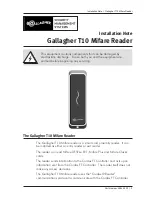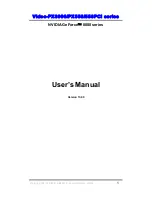
Hardware Installation
1.
Make sure to set switches and jumpers from either the Option Selection section of this manual or from
the suggestions of SETUP.EXE.
2.
Do not install card into the computer until the software has been fully installed.
3.
Turn OFF computer power AND unplug AC power from the system.
4.
Remove the computer cover.
5.
Carefully install the card in an available 5V or 3.3V PCI expansion slot (you may need to remove a
backplate first).
6.
Inspect for proper fit of the card and tighten screws. Make sure that the card mounting bracket is
properly screwed into place and that there is a positive chassis ground.
7.
Install an I/O cable onto the card’s bracket mounted connector.
8.
Replace the computer cover and turn ON the computer. Enter the CMOS setup program of your system
and verify that the PCI plug-and-play option is set appropriately for your system. Systems running
Windows 95/98/2000/XP/2003 (or any other PNP-compliant operating system) should set the CMOS
option to OS. Systems running under DOS, Windows NT, Windows 3.1, or any other non-PNP-
compliant operating system should set the PNP CMOS option to BIOS or Motherboard. Save the option
and continue booting the system.
9.
Most computers should auto-detect the card (depending on the operating system) and automatically
finish installing the drivers.
10.
Run PCIfind.exe to complete installing the card into the registry (for Windows only) and to determine
the assigned resources.
11.
Run one of the provided sample programs that was copied to the newly created card directory (from the
CD) to test and validate your installation.










































